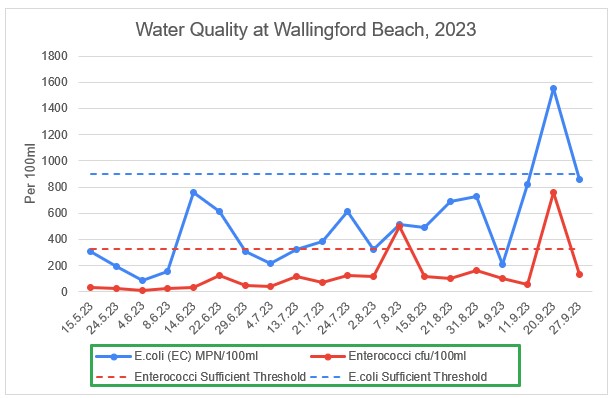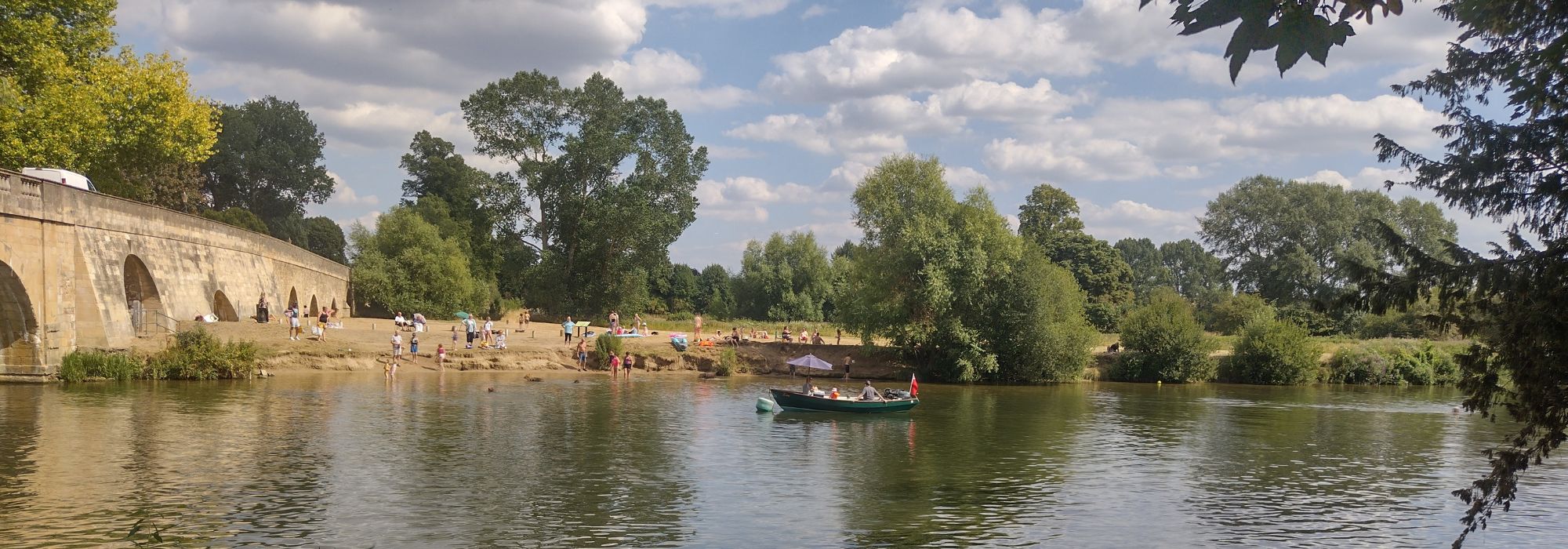Bacteria levels above safety limits at the proposed bathing water site in Wallingford

As part of Thames21’s bathing water application for Wallingford, trained citizen scientists undertook a water quality monitoring programme that involved 20 weeks of sampling, assessing the location against the bathing water regulations used by the Environment Agency. Wallingford Beach is extremely popular with the community for swimming, rowing, and organised events.
If a site is designated bathing water status, it means that bacteria harmful to human health (such as E. coli and Intestinal enterococci) are monitored weekly during the bathing season by the Environment Agency. Information on the water quality is displayed publicly, allowing users to make informed decisions about getting in and on the water and any potential risks.
Unfortunately, the results at Wallingford Beach didn’t paint a good picture for river users, revealing unsafe levels of Intestinal enterococci and E. coli bacteria.
While the data collected in 2023 revealed ‘Good’ water quality for most of the bathing water season, the final few weeks of sampling dropped it to an overall ‘Poor’ classification.
Comparisons between the data gathered in 2022 and 2023 show an overall decrease in the water quality at Wallingford Beach from a ‘Good’ to ‘Poor’ classification, with levels of E. coli in particular being approximately 3.6 times worse in 2023.
James Barlow, a local member of the Grim Swimmers group, said: “As a regular swimmer in the Thames at Wallingford, I am delighted that we have more of an understanding of the water quality from a human health point of view. This allows swimmers and other river users to make more of an informed choice of when to get in or on the water – we can benefit from timely information on water quality for years to come and safely enjoy the immense physical and mental health benefits more frequently. The evidence collected clearly demonstrates to Thames Water and other relevant stakeholders that they need to improve the water quality of the river.”

Further investigations are necessary to understand the contributions of factors resulting in poorer water quality and address these sources of pollution. From rainfall, temperature, the upstream sewage treatment works and related infrastructure, to the impacts of agriculture and septic tanks, more data is required to progress evidence-based improvements.
Sarah Thornley, Thames21’s Catchment Partnership Officer for the South Chilterns, said: “The evidence collected throughout the bathing water season is vital to enabling improvements to water quality locally around Wallingford. The River Thames at Wallingford Beach is a greatly popular and treasured space, yet this year has recorded ‘Poor’ levels of bacteria. There is a crucial need for further investigations and investments to address these sources of pollution and ensure the River Thames in Wallingford is safe and healthy for both wildlife and local communities to access and enjoy.”
Sadly, Wallingford isn’t alone. A recent water quality report conducted by the marine conservation charity, Surfers Against Sewage, found that 60% of monitored inland bathing sites in England didn’t meet minimum safety requirements for water users.
Our rivers and waterways are in a dire state and multi-stakeholder action is very much needed to protect our rivers and enhance their health, for both our and nature’s sake. Closely monitoring water quality and understanding the main sources of pollution is a great starting point.
Read the Wallingford Beach water quality sampling report 2023 here.
